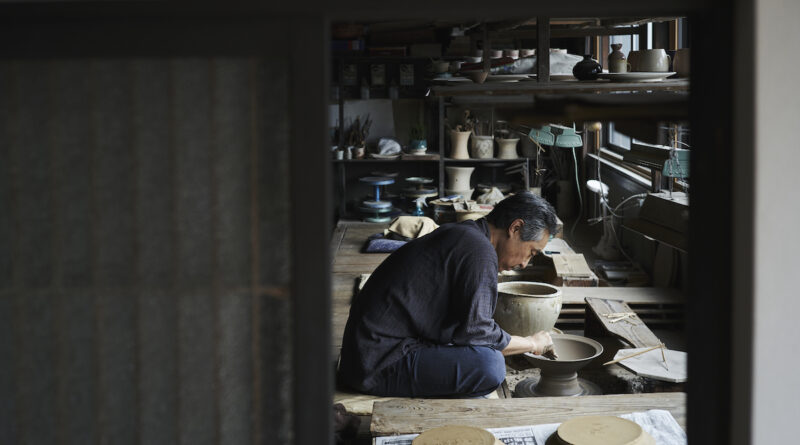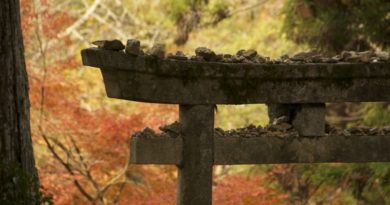Sacred sands and wishes for peace, from Miyajima to the world
Across the water from Itsukushima Shrine, the Yamane family have been running Taigendo kiln since 1912. With close links to the ancient shrines and temples on sacred island, Taigendo’s products are more than mere souvenirs.
From folk custom to sacred keepsakes
Once a year, at a special ceremony at Itsukushima Shrine Shinto priests bless and present Kosai Yamane with a weighty bag of sand. This is no ordinary sand, however. Coming from the seashore over which the shrine is believed to have stood since the 12th century, it, like the island of Miyajima itself, is considered sacred.
Kosai Yamane III is the current head of the Taigendo kiln located across the short stretch of water that separates the mainland from Miyajima, and is known for the production of what is known as o-suna-yaki.
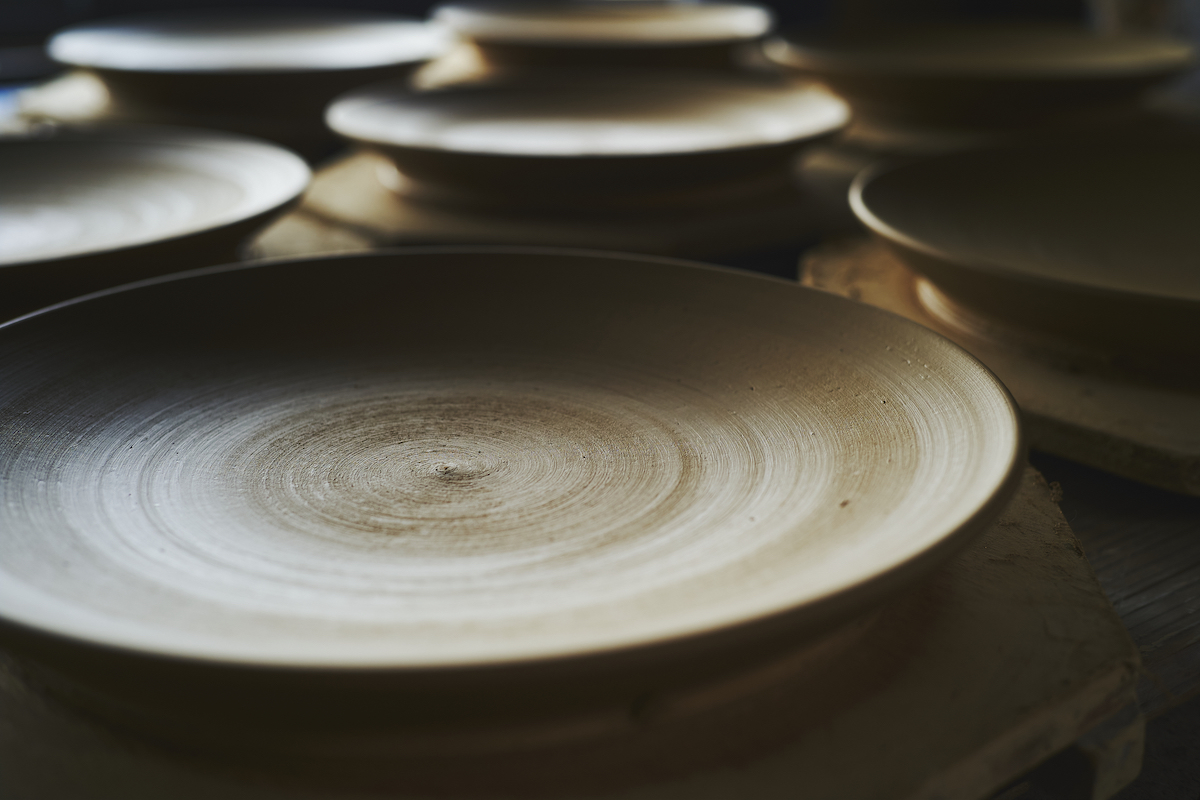
The origins of o-suna-yaki lie in an old folk custom. Before leaving on a journey, local people would carry sand from below Itsukushima Shrine with them as a kind of good luck charm. On their safe return, they would return the sand with an equal amount of soil from where they had been; a custom known as o-suna-gaeshi. Over time, the custom evolved, and, by the 19th century, ritual articles made of clay containing sacred sand (called o-suna yaki or shinasha yaki) were being used by the shrine and sold to worshippers.
Yamane’s grandfather (Kosai Yamane I) was one of several kilns to revive the production of o-suna-yaki when he founded Taigendo in 1912, and the kiln has been the official kiln of Itsukushima Shrine since that time. Taigendo continues the tradition today, blending grains of Miyajima’s sacred sand into its clay to create a wide range of pottery.
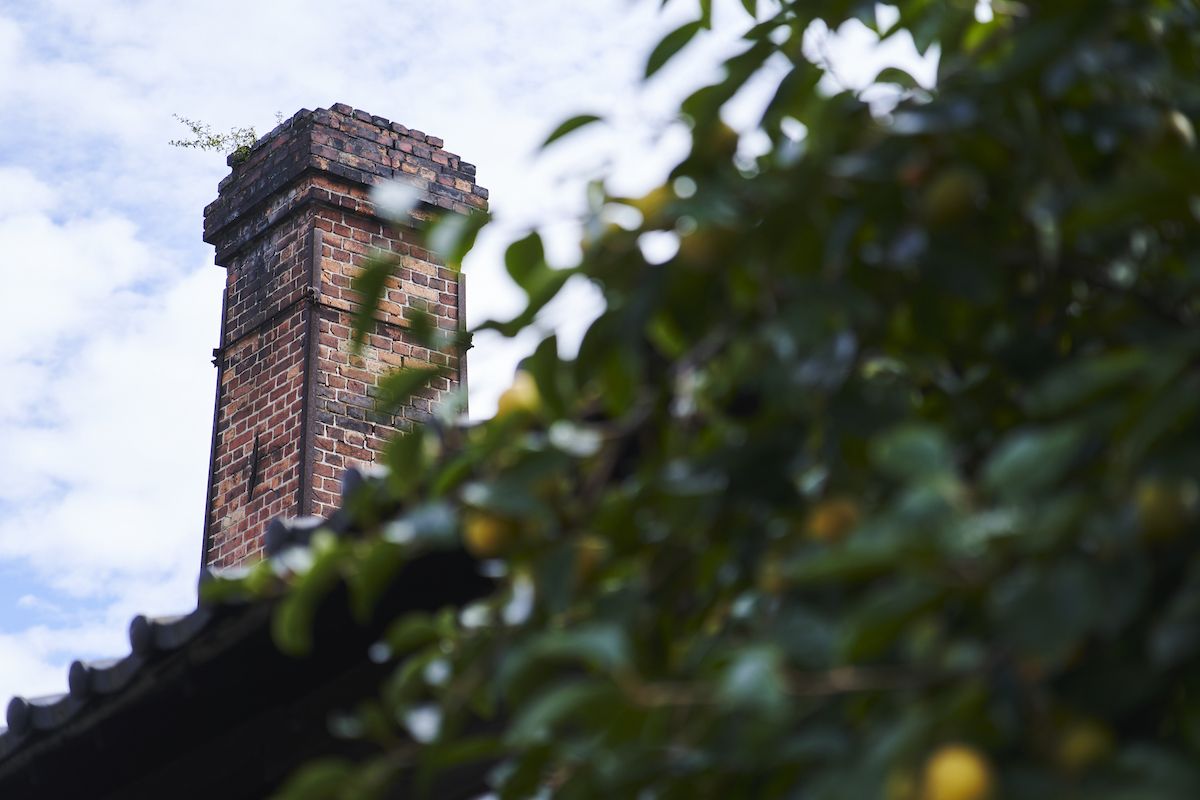
Discussing the history of o-suna-yaki in Taigendo’s gallery, near Miyajimaguchi ferry terminal and identifiable by the kiln’s now-unused, brick chimney, Yamane’s wife, Yumika, pulls out an old wooden box found when clearing out part of the kiln. Inside are an array of intricately crafted hanko, stamps used to emboss the crest of a shrine on unglazed kawarake cups used to serve o-miki ritual sake, from decades past.
As well as Itsukushima’s crest (the three hexagons containing flowers and swords that you see on the lanterns that adorn the shrine’s walkways) there are stamps from shrines far and wide. Kosai and Yumika lament that, these days, when you visit a shrine at New Year, o-miki is often served in mass-produced cups. You can tell that they are proud to be part of maintaining the tradition of producing kawarake cups and grateful to shrines such as Itsukushima that continue it.
Handcrafted reminders of Miyajima
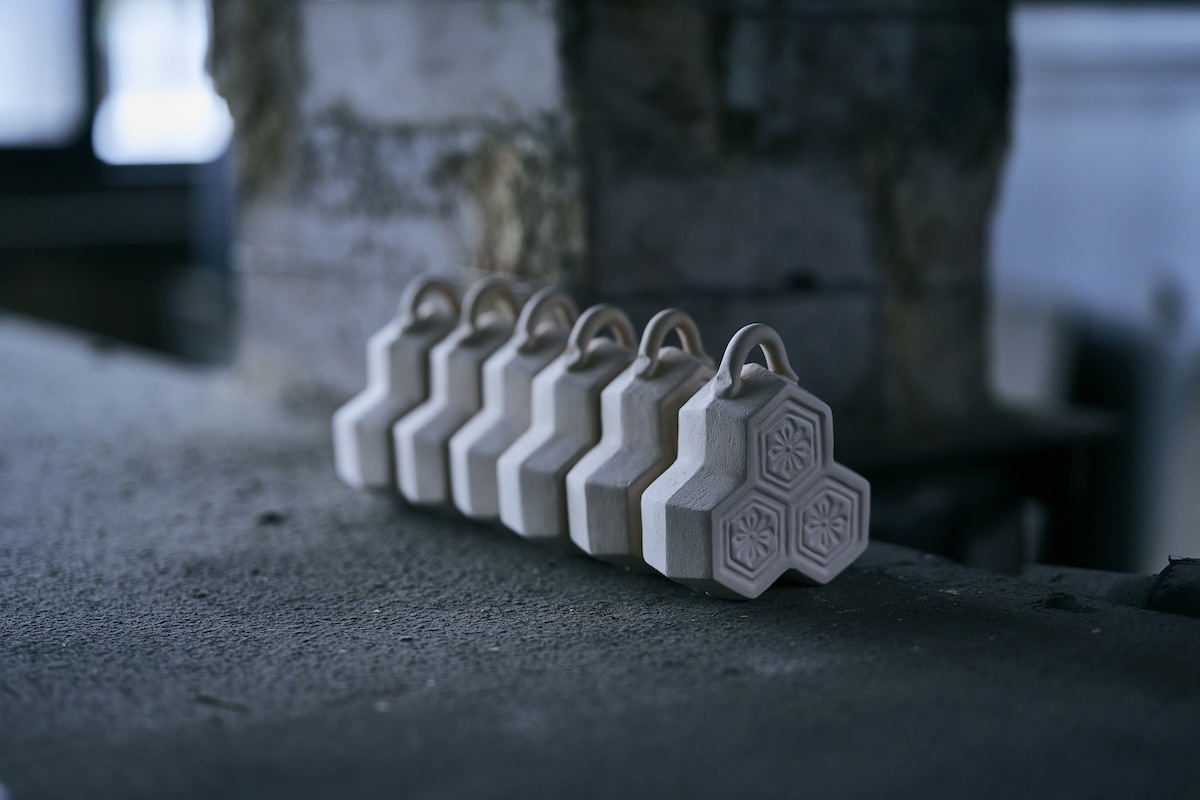
Ceramic bells are another of Shinto articles that Taigendo makes for Itsukushima Shrine. Every year, they produce hundreds of these 3-dimensional versions of the shrine’s crest, said to ward off misfortune. I am amazed at how much of the production process is done by hand.
It is an example of the line that Taigendo treads, serving the huge number of people who visit Miyajima every year (numbers passed 4.5 million in 2019) without sacrificing highly-skilled craftsmanship or their respect for tradition. This is perhaps best exemplified by Taigendo’s Momiji-mon (Japanese maple leaf crest) gift line.
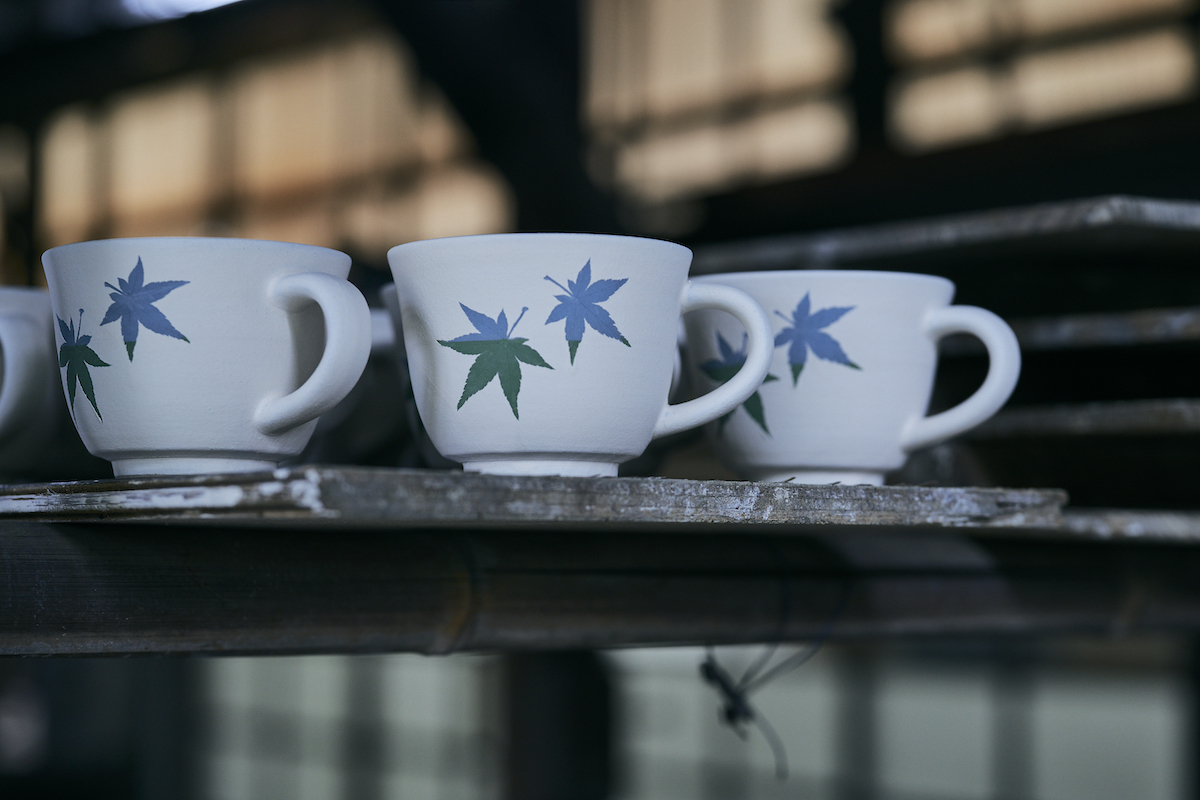
Momiji-mon was his mother’s idea, Yamane tells us. The Japanese maple is the official tree of Hiroshima, but is most closely associated with Miyajima. In the autumn, thousands visit to enjoy the vibrant reds of the island’s maple trees.
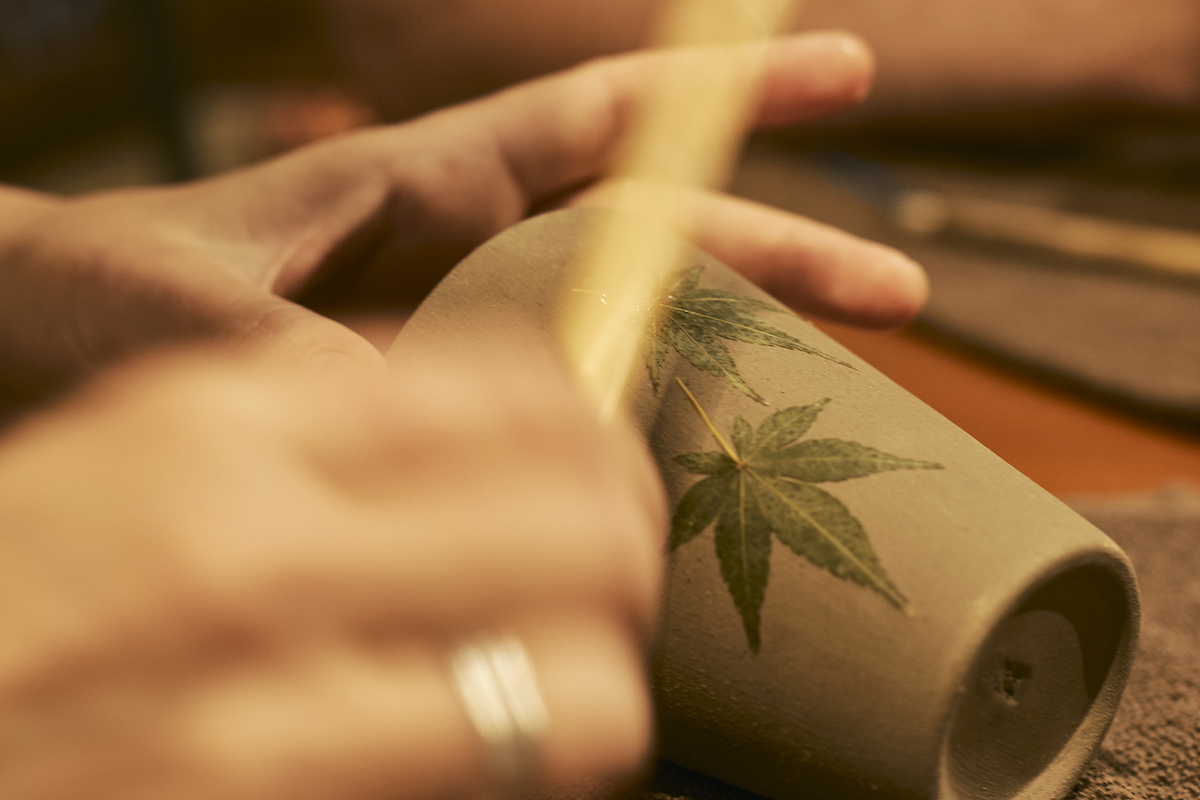
The leaf designs that embellish a wide range of o-suna-yaki products are created by carefully placing real maple leaves from neighborhood trees, one by one, on each piece of pottery before firing. These cups, plates and other items make for wonderful reminders of your time in Miyajima, their value much enhanced by this added care and attention to detail. Yamane’s mother’s idea is still, by far, their most popular product and Starbucks has even commissioned Taigendo to produce a limited number of exclusive Momiji-mon coffee mugs [ja] each month, available only at their Miyajima store.
Art vs commerce and the spirit of peace
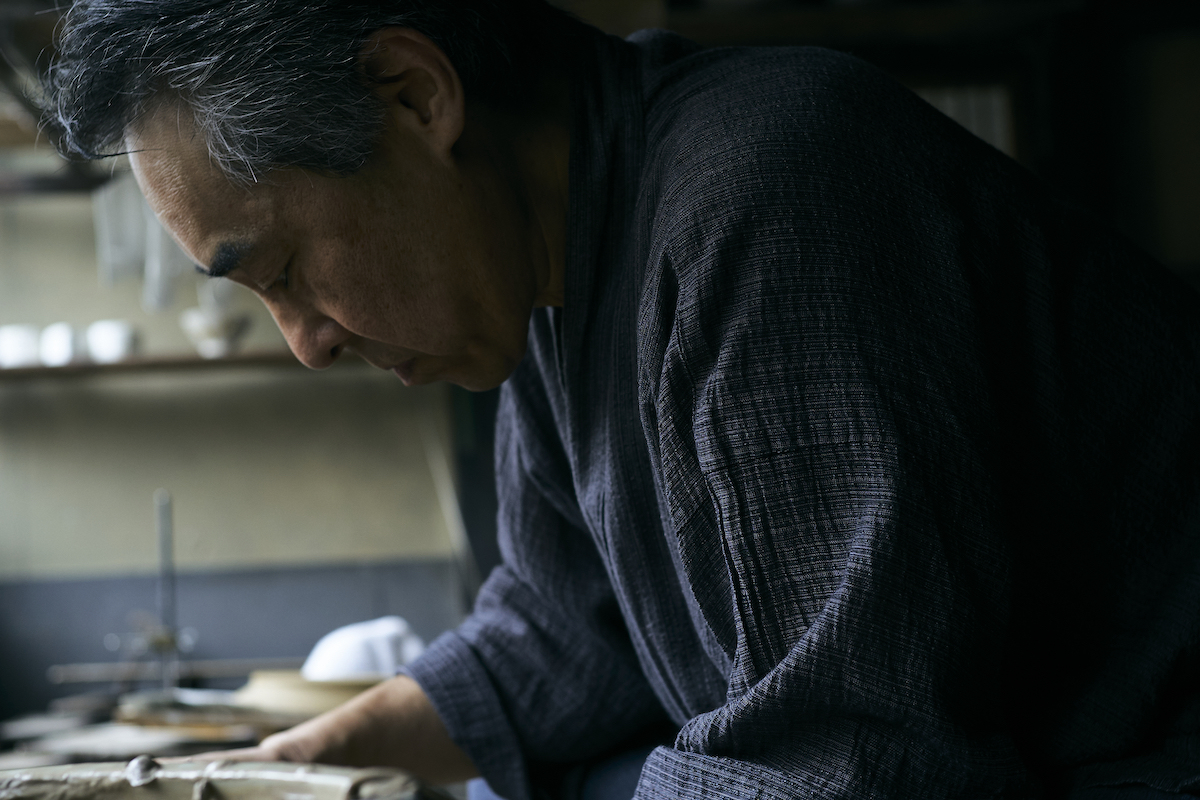
Talking with Yamane, however, you can sense that he is somewhat conflicted. He is at heart an artist who loves nothing more than spending time in what he describes as a dialogue with clay. You can view some of Yamane’s one-of-a-kind artistic pieces (as well as some of his father Kosai Yamane II’s works) in the gallery attached to their showroom. Usually rather quiet, Yamane becomes animated when talks about his process and helping his materials “take the form that they aspire to”.
A recent project, sits in space between handcrafted souvenir and work of art, both in concept and product.
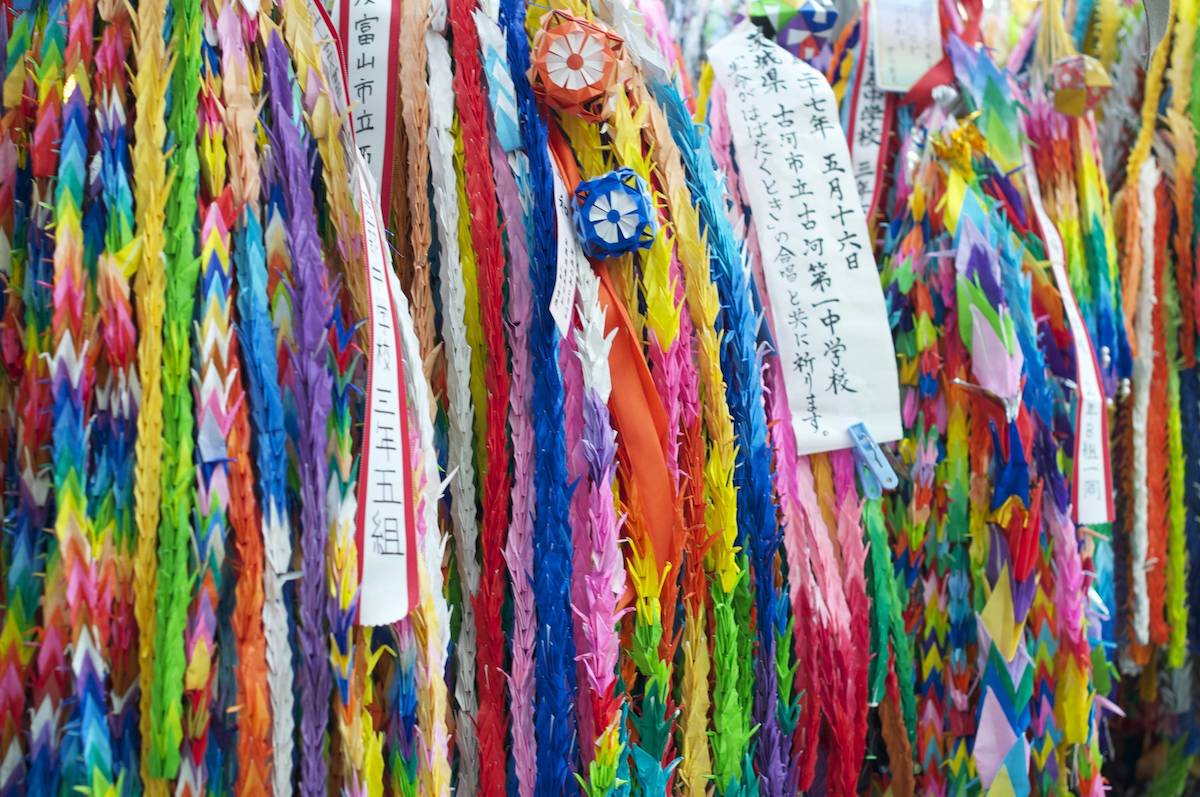
The moving story of Sadako Sasaki, who died from leukemia at the age of 12 as a result of being exposed to the A-bomb at the age of 2 years old, has touched hearts around the world and made the orizuru origami crane a symbol of the wish for the abolition of nuclear weapons and peace. Each year, around 10 million origami peace cranes are sent to Hiroshima to be offered to the Children’s Memorial in the city’s Peace Memorial Park. Overwhelmed by their sheer volume, it was decided that a respectful way to make way for new cranes was for them to be ceremonially cremated at 1200-year-old Daishoin Temple on Miyajima.
The flame used in the ceremony is taken from a fire that is said to have burned continuously on Miyajima’s Mt Misen since Daishoin was founded, the same fire used to light the “Flame of Peace” that burns at the cenotaph in the Peace Memorial Park. Similar to how Taigendo mixes Miyajima’s sacred sand into its clay, ash from the cranes is mixed into a glaze used on a porcelain o-suna-yaki incense burner, crafted into the shape of an orizuru origami peace crane.
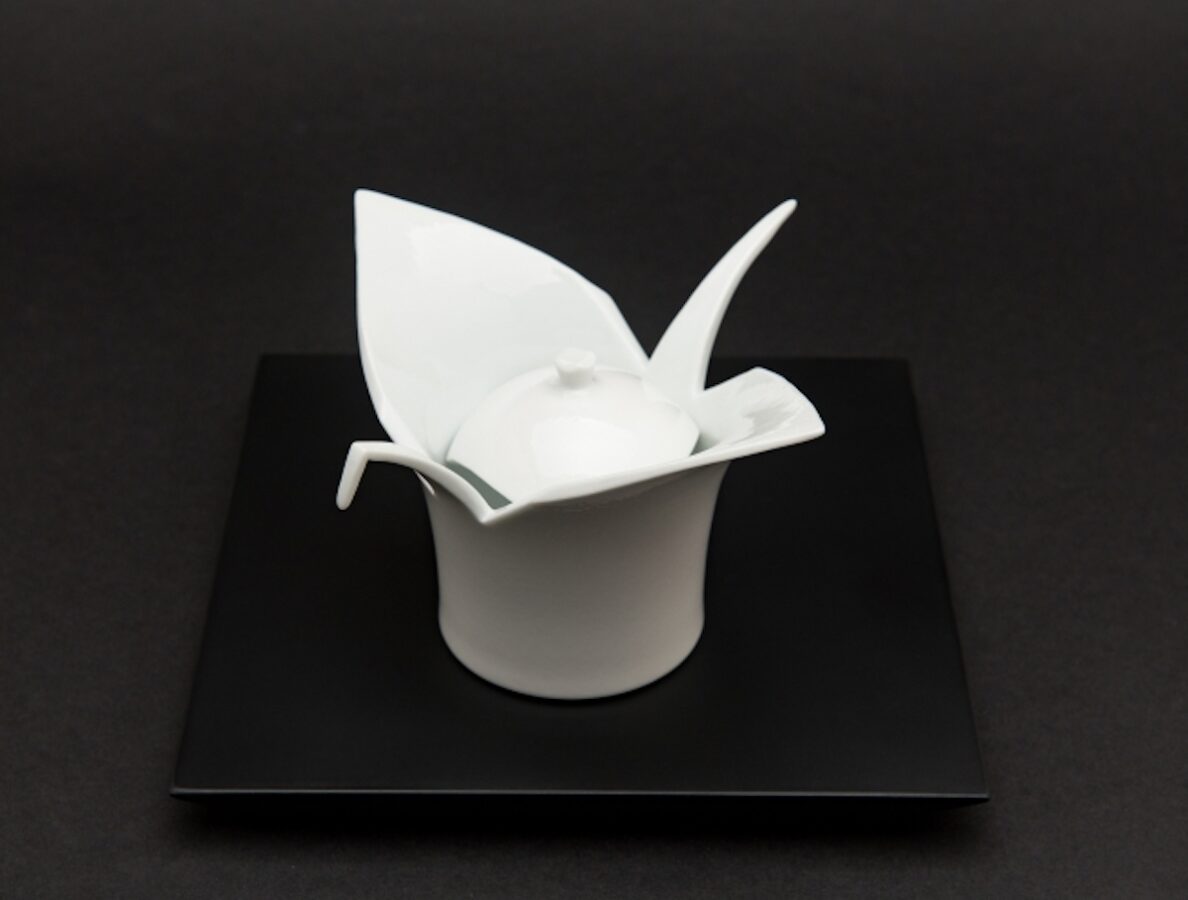
Yamane says that perfecting the glaze wasn’t easy. There was a long process of trial and error, before he managed to overcome the challenge of using ash made from paper rather than wood, with the added complication that the donated cranes contain many kinds of paper and other materials.
This was a project close to Yamane’s heart, however. His mother was exposed to the bomb as a teenager and, although she was relatively lucky, he remembers that she always wore long sleeves to cover scars on her arms and she never talked about her experience. He says that he was becoming more and more troubled to see the column inches devoted to the anniversaries of the A-bombings shrink each year.
Each Inori (Prayer) incense burner takes around a year to craft and they are only available by order. Thus, Yamane also developed a small lantern which is modeled on the shape of the Children’s Peace Memorial and less time consuming to make. A candle sits below the dome on a plate glazed with the special ash.
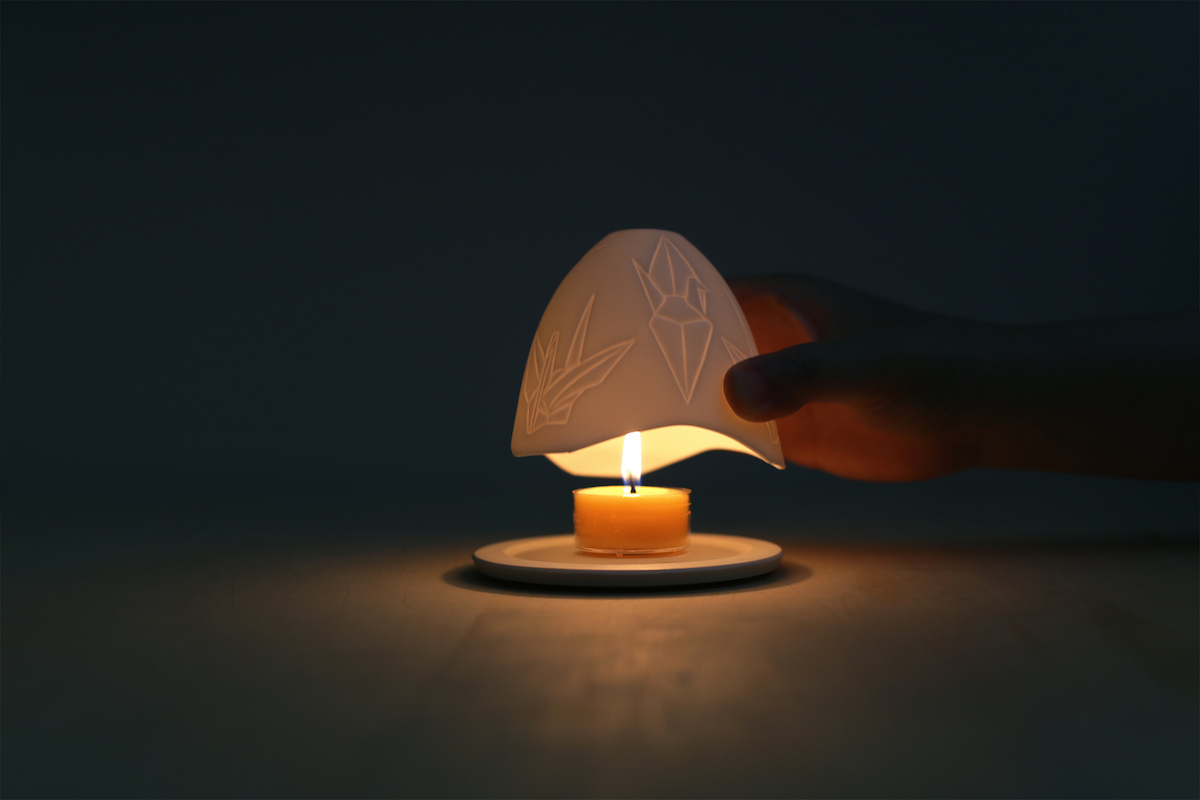
Yamane feels that by creating something that not only helps prolong the life of the emotions that filled each and every one of the origami cranes folded by people around the world, but that also serves as a gentle reminder of the need to keep working towards peace, he has made a small contribution to making sure that the tragedy of Hiroshima and Nagasaki are not forgotten.
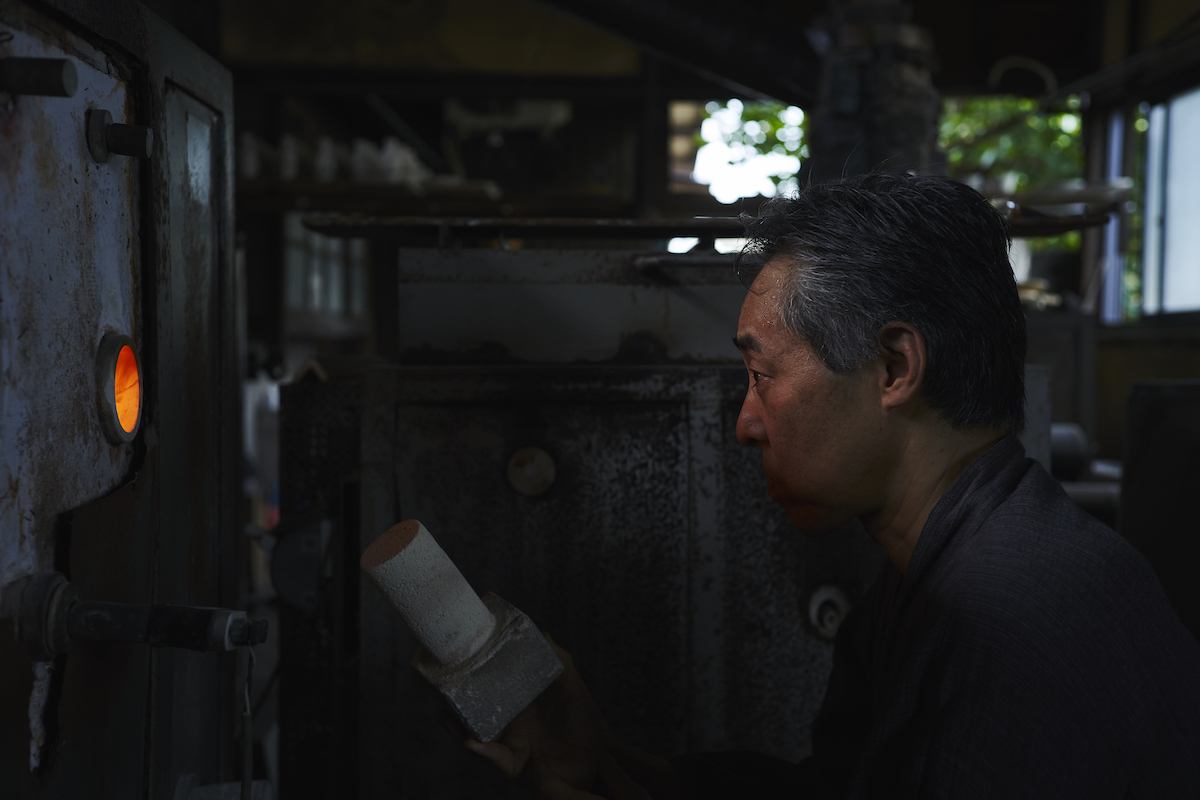
With talk of the possibility of the use of nuclear weapons once more in the air, Yamane was delighted to learn that an Akari lamp ordered on short notice by the Japanese Foreign Ministry in March 2023 was destined to be presented to the President Volodymyr Zelenskyy by Prime Minister Fumio Kishida on a visit to war-torn Ukraine late that month. Lamps were also presented to each of the world leaders who attended the Hiroshima G7 Summit, and I would like to think that, thanks to Taigendo, the wishes for peace from around the world glow in their offices.
Taigendo [宮島お砂焼 対厳堂]
November 2023
Photos: Shota Matono


